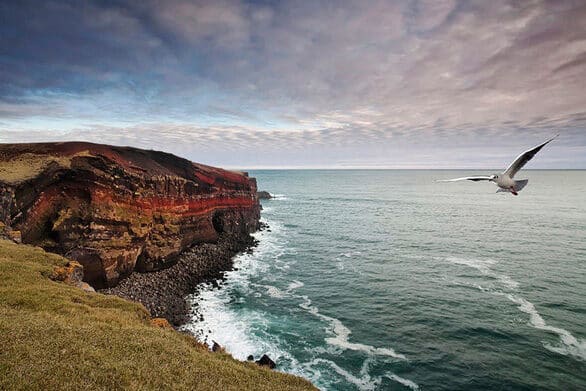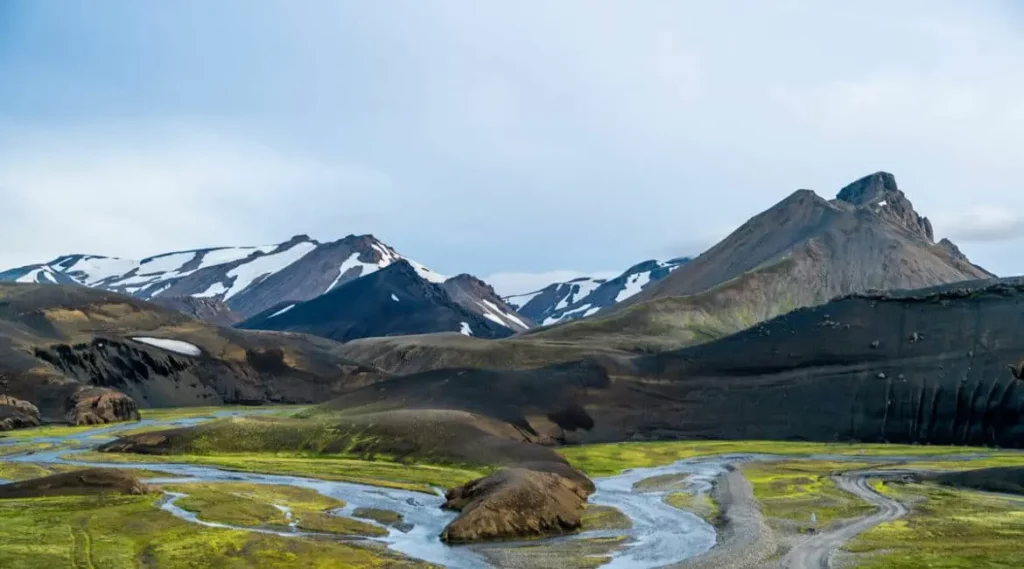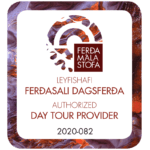Why is Iceland called Iceland and Greenland called Greenland when Iceland is green and Greenland has huge amounts of ice? Some people think it’s because the people discovered Iceland wanted to keep it for themselves, and encouraged people to go on further to the more tropically named Greenland. Whilst this isn’t correct there is a grain of truth in it, and the actual answer is unexpected.
Firstly it should be said that whilst Icelanders called Iceland Iceland, written Ísland, and pronounced Ee-island, Greenlanders do not call their country Greenland. In the Greenlandic Inuit language, it is called Kalaallit Nunaat, which means “Land of the People.” The names we use come from our Norse ancestors.
Greenland is more North, South, East, and West than Iceland. So it makes sense that the most Southern point of Greenland is the most inhabited area, complete with farms. The same as a thousand years ago, when Erik the Red found it. Iceland is kept warm by the gulf stream, so Iceland is warmer than Greenland, and the milder climate means a longer growing season, and therefore greener during the summer months. Iceland has about 10-14% of its surface area covered in glaciers, and Greenland has 80% so both countries are a bit icy and a bit green, depending on where you go.
The current names come from the Viking way of naming places. Reykjavik means smokey bay – a bay with all the steam vents looking like smoke. A thousand years ago the area the Vikings landed in Greenland (probably to hunt walruses’ for their ivory as they had been hunted to extinction in Iceland) was warmer than it is today, so it makes perfect sense that it would be green, and the Vikings would call it ‘Greenland.’
As well as that the man who found it – Erik the Red – wanted more people to settle there, so thought if it had a pleasant-sounding name people would be more likely to move there. Erik the red is remembered as an explorer, but he went West originally because he was kicked out of Iceland for murdering three people in a feud!
It worked and Vikings settled there, and would probably still be there today except for a series of catastrophic events. The temperature of Greenland dropped in the 14th century due to a volcanic eruption on the other side of the world, the black death in Europe killed a lot of demand for what walrus ivory they could sell, and trade routes to Africa now meant people wanted the high-quality elephant ivory instead of their chief export had been walrus ivory.

So now we know why Greenland is called Greenland but why is Iceland called Iceland?
Icelandic sagas, and stories, often involve real people and events, and so can help us understand why Iceland is called Iceland. One of these people called Flóki came to Iceland, which was at the time called Garðarshólmur (Garðar’s Isle), after first being called Snæland (snow land). He wasn’t the first to find Iceland but it was still in the early days. He had a really horrid time; his daughter drowned on the way, then all his livestock starved to death during the long harsh winter months.
Flóki became depressed, and one day climbed a mountain to see if he could see anything good. All he could see was a fjord full of icebergs. He returned to Norway having bitterly called Iceland Iceland. Despite him telling everyone how awful it was another crew member told everyone it was so rich that even the grass dripped with butter, and soon people became to settle there in numbers and refer to themselves as Íslendingur (a man from Iceland in the court of Norway.)
So Iceland is called Iceland because of a depressed man down on his luck, had one of the other names for it stuck we could be living in Snowland right now!


